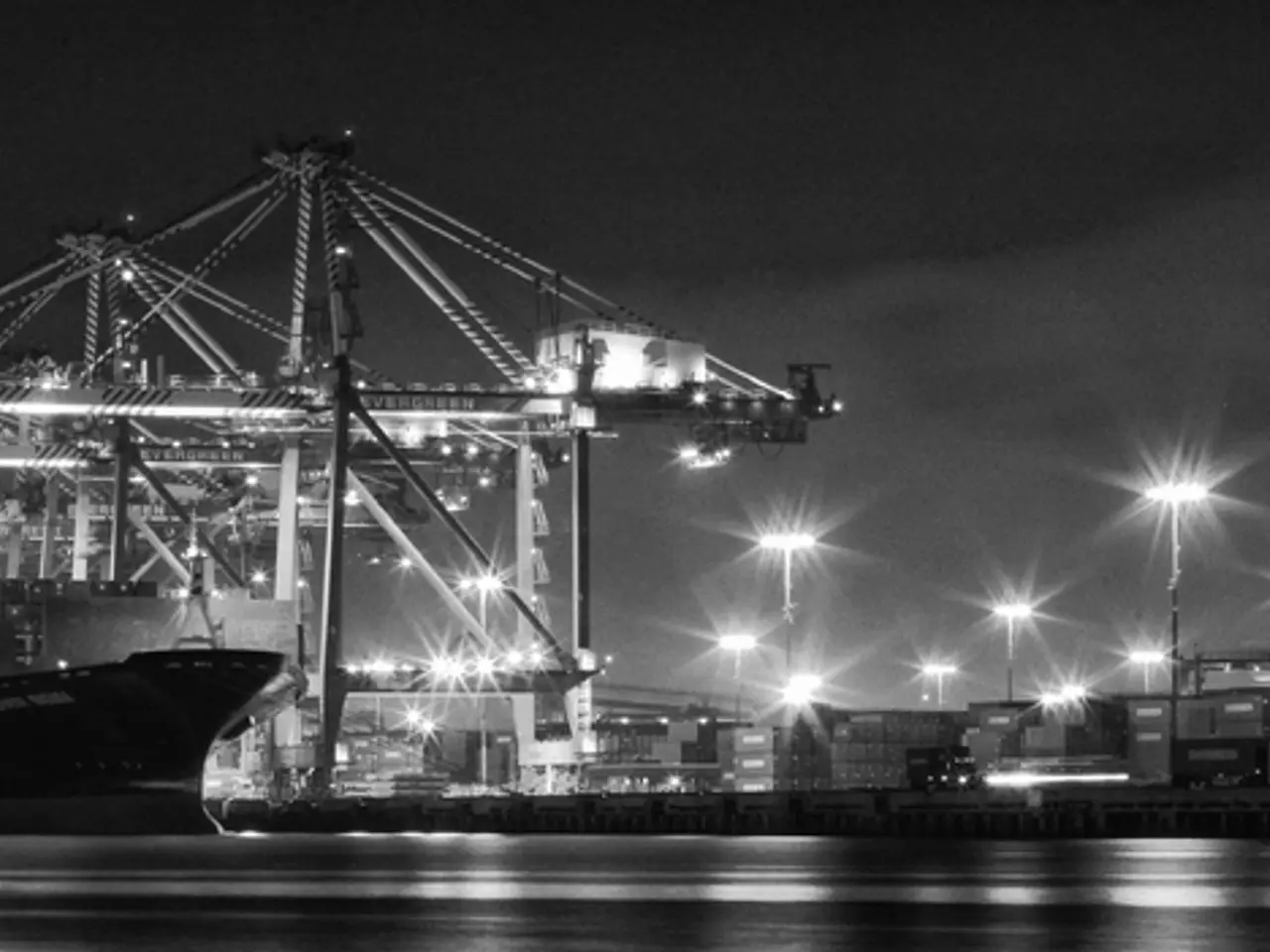Decarbonization drive in Singapore is spearheaded by electric vessels
Singapore Embraces Electric Vessels and Zero-Carbon Fuels in Maritime Sector Transition
In a significant step towards a greener future, Singapore has opened its first fully electric ferry service in April 2023, marking a new era for sustainable maritime transportation. Just a few months later, in November, the country launched its first fully electric cargo vessel.
This transition is driven by the Maritime and Port Authority (MPA) of Singapore, which is working closely with partners to establish a supply chain for zero-carbon fuels like green ammonia, hydrogen, and methanol. The MPA's mandate, announced last year, requires all harbor craft built from 2030 onwards to be fully electric, capable of using B100 biofuel or compatible with clean fuels such as hydrogen.
The MPA has awarded three such trials under a call for proposal for electric vessel charging concepts. One of these trials is being jointly operated by Pyxis Energy, Pyxis Maritime, and SP Mobility. Pyxis Energy, a key player in this transition, aims to launch more than 100 electric vessels across the Asia Pacific by 2030. The company recently unveiled its new electric harbor craft, the X Tron, which is one of 11 designs shortlisted by the MPA for further development. Pyxis Energy is also working on two other variants, Pyxis R and Pyxis L.
The charging point for these electric vessels is located at Marina South Pier and features a 150-kilowatt charger with a battery capacity of 500 kilowatt-hours.
Singapore's push towards renewable energy is crucial given its status as a strategic hub for global shipping and trade. The country's maritime sector is responsible for emitting around 1 billion tons of carbon dioxide a year, which amounts to about 3% of overall emissions. As the world's largest refueling hub for shipping and the world's top maritime center for the tenth year running in 2023, Singapore has a significant role to play in reducing the carbon footprint of the global shipping industry.
However, Singapore's ventures into alternative energies such as nuclear and low-carbon hydrogen are limited by its geographical constraints. The country is an energy-disadvantaged country that relies almost exclusively on natural gas, a fossil fuel. Natural gas currently constitutes 94.3% of Singapore's energy mix, with only 4.4% coming from domestic solar and biomass sources and the remaining 1.2% from coal and petroleum.
In an effort to overcome these challenges, the MPA collaborates with several companies to build a supply chain for zero-carbon fuels such as green ammonia, hydrogen, and methanol. Major stakeholders like Maersk, which is pioneering maritime sustainability with methanol-powered container ships operating on Asia-Europe routes, are part of this collaboration.
The global shipping industry is also making strides in sustainability. In March this year, an inaugural trial of ammonia as a marine fuel occurred on board a Singapore-flagged vessel operated by Fortescue. This trial marks a significant step towards the decarbonization of the shipping industry.
In conclusion, Singapore's transition towards renewable energy in its maritime sector is essential and timely. With initiatives like the first fully electric ferry service and the push for zero-carbon fuels, Singapore is setting a strong example for the global maritime community in the fight against climate change.
Read also:
- MRI Scans in Epilepsy Diagnosis: Function and Revealed Findings
- Hematology specialist and anemia treatment: The role of a hematologist in managing anemia conditions
- Enhancing the framework or setup for efficient operation and growth
- Hydroelectric Power Generation Industry Forecasted to Expand to USD 413.3 Billion by 2034, Projected Growth Rate of 5.8% Compound Annual Growth Rate (CAGR)








